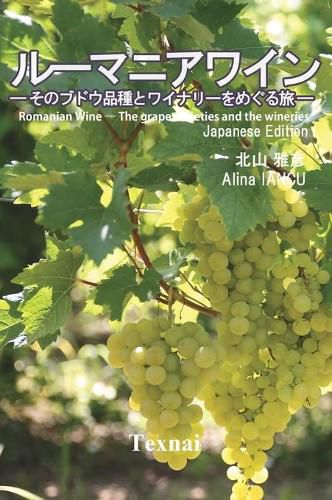Readings Newsletter
Become a Readings Member to make your shopping experience even easier.
Sign in or sign up for free!
You’re not far away from qualifying for FREE standard shipping within Australia
You’ve qualified for FREE standard shipping within Australia
The cart is loading…






This title is printed to order. This book may have been self-published. If so, we cannot guarantee the quality of the content. In the main most books will have gone through the editing process however some may not. We therefore suggest that you be aware of this before ordering this book. If in doubt check either the author or publisher’s details as we are unable to accept any returns unless they are faulty. Please contact us if you have any questions.
This book introduces grape varieties and wine in Romania. Large amount of traditional local varieties such as FETEASCA REGALA and FETEASCA ALBA are grown in Romania as well as some international varieties like MERLOT and SAUVIGNON BLANC. They have the fifth largest vineyard in the EU. However, their wines are not recognized as wines produced by top four countries who has the largest vineyard in the EU namely Spain, France, Italy and Portugal. In the 19th century before Phylloxera damaged vineyard in Europe, Romanian wines used to be rated high in the world. Wine produced in Cotnari area used to be precious in Western Europe. Quality of Romanian wine once declined and came into disrepute from 1940’s. Even after Romanian revolution, their qualities could not be recovered until the 21st century. After joining the EU in 2007, quality of Romanian wine drastically improved through investments from people in overseas as well as efforts of existing wineries in Romania.
This book describes the characters of top 50 grape varieties which has the large size of vineyard in Romania including promising varieties such as FETEASCA NEAGRA. Thirty excellent wineries were selected from eight major wine regions in Romania and their characteristic wines which represent wines of Romania are also introduced. Foods in Romania are also discussed by focusing on a history of home cooking. Through this book, the authors try to introduce modern wine production in Romania.
$9.00 standard shipping within Australia
FREE standard shipping within Australia for orders over $100.00
Express & International shipping calculated at checkout
This title is printed to order. This book may have been self-published. If so, we cannot guarantee the quality of the content. In the main most books will have gone through the editing process however some may not. We therefore suggest that you be aware of this before ordering this book. If in doubt check either the author or publisher’s details as we are unable to accept any returns unless they are faulty. Please contact us if you have any questions.
This book introduces grape varieties and wine in Romania. Large amount of traditional local varieties such as FETEASCA REGALA and FETEASCA ALBA are grown in Romania as well as some international varieties like MERLOT and SAUVIGNON BLANC. They have the fifth largest vineyard in the EU. However, their wines are not recognized as wines produced by top four countries who has the largest vineyard in the EU namely Spain, France, Italy and Portugal. In the 19th century before Phylloxera damaged vineyard in Europe, Romanian wines used to be rated high in the world. Wine produced in Cotnari area used to be precious in Western Europe. Quality of Romanian wine once declined and came into disrepute from 1940’s. Even after Romanian revolution, their qualities could not be recovered until the 21st century. After joining the EU in 2007, quality of Romanian wine drastically improved through investments from people in overseas as well as efforts of existing wineries in Romania.
This book describes the characters of top 50 grape varieties which has the large size of vineyard in Romania including promising varieties such as FETEASCA NEAGRA. Thirty excellent wineries were selected from eight major wine regions in Romania and their characteristic wines which represent wines of Romania are also introduced. Foods in Romania are also discussed by focusing on a history of home cooking. Through this book, the authors try to introduce modern wine production in Romania.